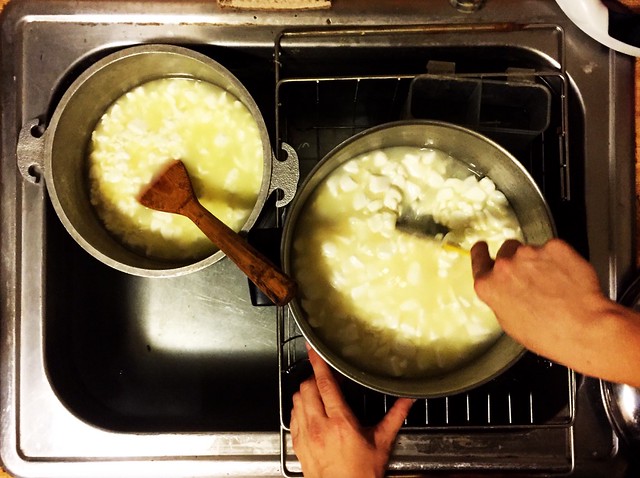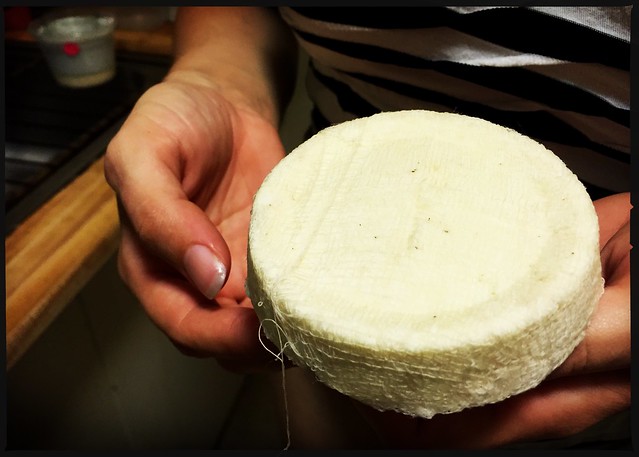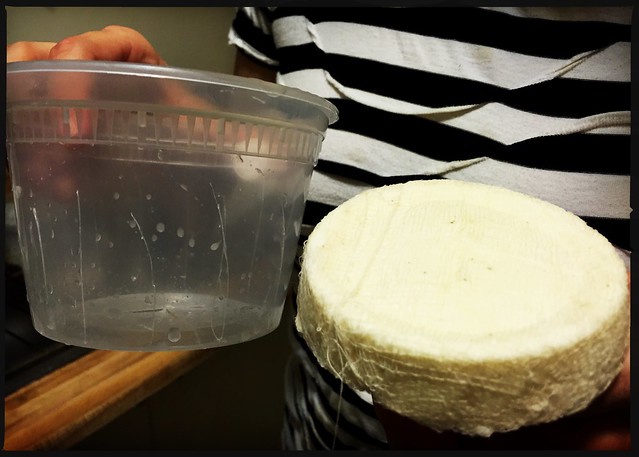Today, since Doc and I had already taken that cheese making class, I decided to make some farmhouse cheddar today!
Since we are still experimenting with all the factors, Doc and I decided to make four little cheeses instead of one big cheese:
- Pasteurized milk, aged 4 months
- Pasteurized milk, aged 8 months
- Raw milk, aged 4 months
- Raw milk, aged 8 months

These were the only variables, though. All cheese permutations were made from non-homogenized Jersey cow’s milk. I’m hoping that the pasteurized milk cheese tastes just as good as the raw milk cheese, because raw milk is incredibly expensive (makes sense why it would be, having a much shorter shelf life, but still).

I could really tell the difference between the two milks, though. You need to add calcium chloride to pasteurized milk in order to use it for cheese, otherwise it won’t form a firm enough curd. So there’s that. But the pasteurized milk whey was a very bright brilliant yellow, whereas the raw milk curd was a much duller yellow, almost a greyish yellow in comparison. I do not know why this would be. You can see the color difference in the photos, but it seemed even more dramatic in person.

When they’re done aging, we’ll taste them in side-by-side comparisons and decide if the raw milk is worth the extra cost. I wanted to age one of the test cheeses for over a year, but Doc suggested that since these are just tiny test cheeses, we should do a shorter aging process so we can start on the large-batch cheeses (to age over a year) sooner.

The bacteria we used were lactococcus lactis subsp. lactis and lactococcus lactis subsp. cremoris. I’ve read that Streptococcus thermophilus is being used more and more in industrial cheddar production, but it wasn’t present in the little culture packet we bought.
We’ll see how it turns out!

2 thoughts on “Farmhouse Cheddar”